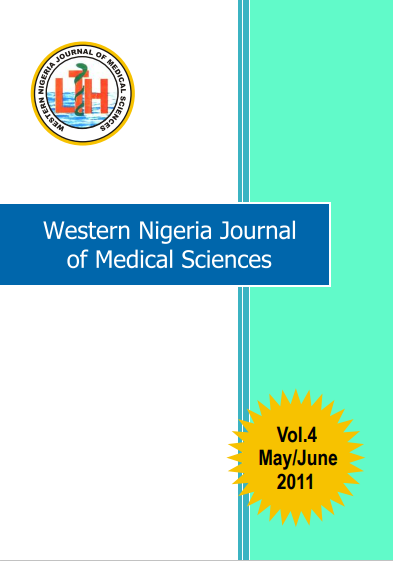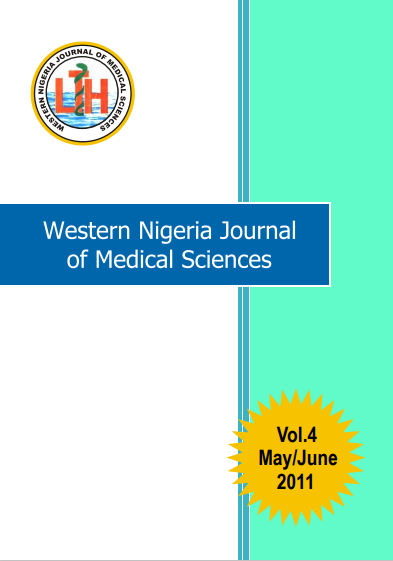Vol. 4 No. 04 May/June (2011): Western Nigeria Journal of Medical Sciences

Coming with developments in technology has been an increasing use of photography in medical work, teaching and research. This is right because one picture can more accurately document and describe a situation than many words. Olaitan in his review paper has captured for us the benefits and uses of clinical photography in plastic surgery including those of the advances in digital photography. He also hints on possible abuses of these developments. On our marks then with cameras, every health worker a photographer. This volume contains 2 papers on birth defects. Elemile et al wrote on cutaneous defects so common ( found in 16.7% of neonates surveyed) and innocent looking that none of the mothers of the affected babies had noticed them .
Joel Medewase on the other hand wrote a case report on a neonate with giant congenital melanocytic nevus so grotesque and extensive that one can only leave to imagination how a mother in a rural area who delivers such a baby would respond and cope with the psychosocial and management problems surrounding the birth of such a baby.
Industrial and labour disputes are becoming common day experience in our hospitals. When they occur, various challenges are presented to clinicians managing seriously ill patients. What does a doctor do if all hospital workers except doctors go on strike?. In many advanced countries such would be most unlikely to happen. Adebami et al analysed neonatal admissions into a teaching hospital during a 4 month such strike to study the effect of the absence of nurses on neonatal mortality and the hospitals work. They found that the predictable rise in mortality which they experienced was compensated for by the survival of some critically ill babies who would have died if not admitted.
Alao et al have contributed a useful data paper on the amniotic fluid indices in Normal human pregnancies in Southwestern Nigeria. Amniotic fluid indices is a non invasive technique of estimating amniotic fluid volume the values of which have diagnostic implications.
This volume also contains a case report by Adekanle et al on Heterotropic pregnancy. The case illustrates the possibility of good and bad fortune being experienced by the same person. A A38-year-old G2P1 woman experienced an intrauterine pregnancy diagnosed 5 weeks after she had a total right salpingectomy because of ruptured ectopic pregnancy. The intrauterine pregnancy which was ultrasonographically estimated at 12 weeks was successfully managed to produce a live infant. Hurray!
Gabriel A.Oyedeji.








